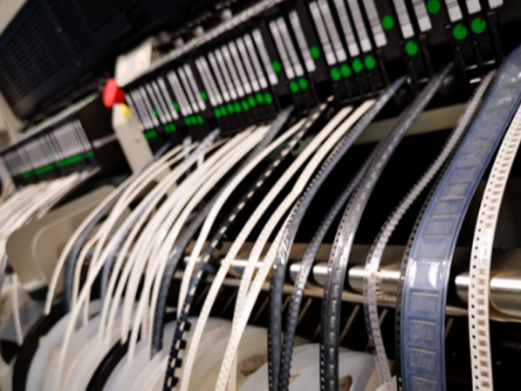Component Kitting: The Importance of Attrition
Part attrition, sometimes referred to as ‘wastage’, is the excess components provided to an electronic assembly kit to tolerate any rejected or lost parts during board manufacture.

Part attrition, sometimes referred to as ‘wastage’, is the excess components provided to an electronic assembly kit to tolerate any rejected or lost parts during board manufacture.

When purchasing parts for low quantity prototype boards that are hand soldered, it’s unlikely you will need to worry about attrition. However, when manufacturing medium to high volumes of a board, it is crucial to take attrition into account. Overlooking attrition and not providing your PCB assembler with sufficient quantity of components can causes delays in assembly while more parts are sourced and delivered.
During SMT manufacture, components will be lost in a number of unavoidable ways. Loading the components onto the feeders is one of the main causes of component loss. Most Pick and Place machines require a certain length of leader tape to be fed into a feeder in order for the feeder to work effectively. Where part reels are supplied, and no leader is included, then a leader has to be made by losing/wasting the first few inches of components on the tape.
Another cause of ‘lost’ components is mis-picks by the pick and place machine. Mis-picks are where the machine cannot pick the component from the tape (for which there are a number of possible causes). The smaller the component the more chance there is of a mis-pick.
Determining the excess amount (attrition) is not always easy but your chosen assembly provider will usually have their own preferences and can advise you on this. The levels will vary depending on the size, type, price and packaging of the component, but below are some rough guides for attrition:
• Passive components (e.g. resistors, capacitors, inductors): 5-15%
• Active component (e.g. IC’s, transistors, power sources): 3-5%
• High value components (e.g. processors, BGA’s, memory): 1 spare component per order
To reduce the loss of components at manufacture, it’s important to consider how you buy your components. Buying components on reels or in large continuous strips of cut tape, rather than multiple short strips or loose, means less will be lost at the setup of the PP machine. Utilising full reels or larger continuous strips can also enable you take advantage of substantial price breaks. Any excess components not ‘wasted’ during manufacture will either be returned to the customer or used on subsequent production runs of your board.
The cost of attrition tends to be very high for low volume runs (1 -10 boards) with attrition contributing to around 5-20% of the material cost. Higher volume runs see this percentage drop away to less than 1% for runs of >100 boards.
When considering attrition levels for components, it is best to overestimate as the cost associated with buying a few extra parts can often be far less than the cost of stopping the production line, and all the delays this entails.
Of course, counter to this, it is important to not set your attrition levels too high, else the upfront cost of manufacturing your board could make the cost/board prohibitively high to manufacture.
Getting the balance right with attrition levels can be difficult to achieve. HGL Systems have a lot of experience of managing attrition, having handled the kitting process for many complex small-scale and large-scale board assembly projects. If you have a prototype batch of volume batch of boards to build, e-mail HGL Systems and we can help determine your attritions or take on the responsibility of kitting your build.
Designed with Mobirise
Follow Us